Are you a man experiencing damaged hair? This can be a frustrating and often embarrassing problem but don’t worry, there are ways to repair your damaged locks.
Healthy hair is not just a matter of appearance; it reflects overall well-being. However, excessive heat styling, chemical treatments, environmental pollutants, and poor hair care practices can leave men with damaged, lifeless hair. Thankfully, repairing damaged hair is possible with the right knowledge and care.
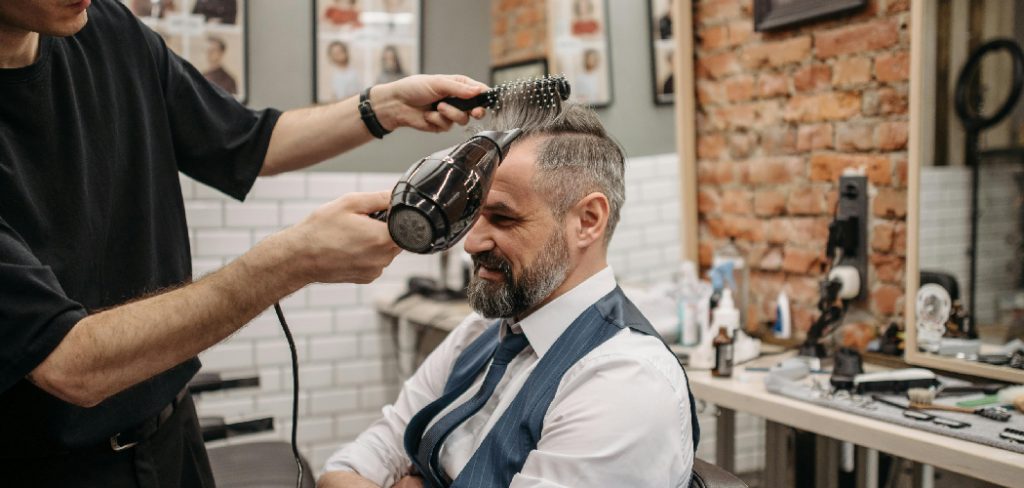
In this guide on how to repair damaged hair men, we will explore practical strategies and tips specifically tailored for men to restore their hair’s health and vitality. From adopting a proper hair care routine to utilizing nourishing products, we will delve into the essential steps for repairing damaged hair and regaining confidence in your locks. Let’s journey to healthier, stronger, and more lustrous hair together.
What are the Benefits of Repairing Damaged Hair?
Before we discuss the steps for repairing damaged hair, let’s first understand why it’s essential.
- Improved Appearance: An improved appearance is one of the most apparent benefits of repairing damaged hair. Healthy hair looks and feels better, making you look more attractive and put-together.
- Boosted Self-Confidence: Damaged hair can significantly impact self-confidence. You can feel more confident in your appearance and yourself by repairing your locks.
- Prevents Further Damage: If left untreated, damaged hair can lead to further breakage and damage. Repairing it early on can prevent this and save you from dealing with more severe hair problems.
- Promotes Hair Growth: Damaged hair is weaker and more prone to breakage, stunting its growth. You can encourage healthier hair growth and achieve your desired length by repairing it.
Now that we’ve established why it’s crucial to repair damaged hair let’s discuss the essential steps.
What Will You Need?
The first step in repairing damaged hair is to gather the necessary tools and products. Here are some items you will need:
- Wide-tooth comb: This comb is essential for detangling wet or dry hair without causing further damage.
- Microfiber towel: Microfiber towels are gentler on hair than regular towels, which can cause friction and breakage.
- Nourishing shampoo and conditioner: Look for products containing ingredients like keratin, argan oil, and biotin, which help nourish and repair damaged hair.
- Deep conditioning treatment: A deep conditioning treatment can provide intense hydration and help restore moisture to your damaged locks.
Once you have these items, you are ready to begin repairing your damaged hair.

10 Easy Steps on How to Repair Damaged Hair Men
Step 1. Assess Your Damage:
The first and most crucial step in repairing damaged hair is to assess the extent of the damage. Take a close look at your hair and identify your issues, such as dryness, breakage, split ends, or excessive frizz. Understanding the specific problems will help you choose the most effective remedies and tailor your hair care routine. It’s also essential to consider the possible causes of the damage, such as heat styling, chemical treatments, or environmental factors, as this knowledge will guide you in making necessary changes to prevent further damage in the future.
Step 2. Trim Split Ends:
Split ends are a common sign of damaged hair and, if not addressed, can travel further up the hair strand, causing more extensive breakage. Schedule a visit to a professional barber or use hair-cutting scissors to trim off the damaged ends. Regular trims—not just when your hair is noticeably frayed—are vital for maintaining healthy hair and preventing future damage. Even though it might feel counterintuitive when trying to grow out your hair, trimming split ends promotes healthier growth and overall strength.
Step 3. Use a Gentle Shampoo:
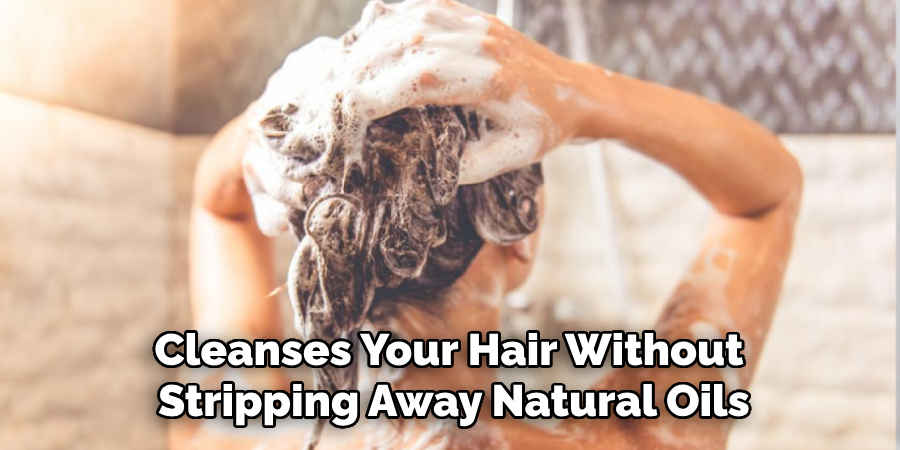
Switch to a sulfate-free, nourishing shampoo that cleanses your hair without stripping away natural oils. Harsh shampoos with sulfates can dry out your hair further, exacerbating the damage. Opt for formulas infused with hydrating ingredients like aloe vera, coconut oil, or argan oil, which help to replenish moisture and protect your hair during washing. Remember to avoid over-washing your hair; washing two to three times per week is typically sufficient for most men unless your hair becomes oily or sweaty frequently.
Step 4. Condition Regularly:
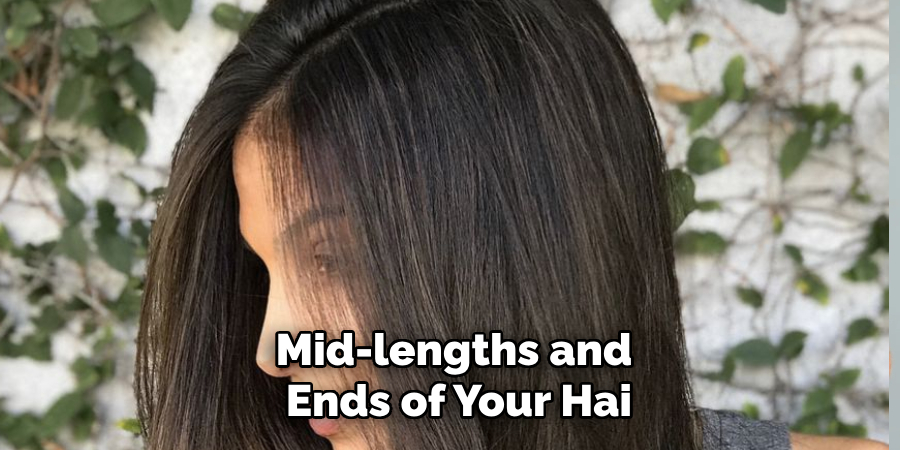
Conditioning is a crucial part of repairing damaged hair. After shampooing, always follow up with a nourishing conditioner. Focus on applying the product to the mid-lengths and ends of your hai, as these areas tend to be the most damaged. Conditioners help restore moisture, reduce frizz, and create a protective barrier against environmental factors. Consider leaving the conditioner on for a few minutes before rinsing it out for extra hydration.
Step 5. Invest in a Weekly Deep Conditioning Treatment:
Deep conditioning treatments are like a spa day for your hair. Use a quality deep conditioner or hair mask once a week to provide intense nourishment and hydration to your locks. Look for treatments containing ingredients like shea butter, amino acids, or keratin, which repair damage, smooth frizz, and strengthen your hair strands. Applying heat during the treatment, such as using a warm towel or a shower cap, can enhance the absorption of nutrients and improve results.
Step 6. Reduce Heat Styling:
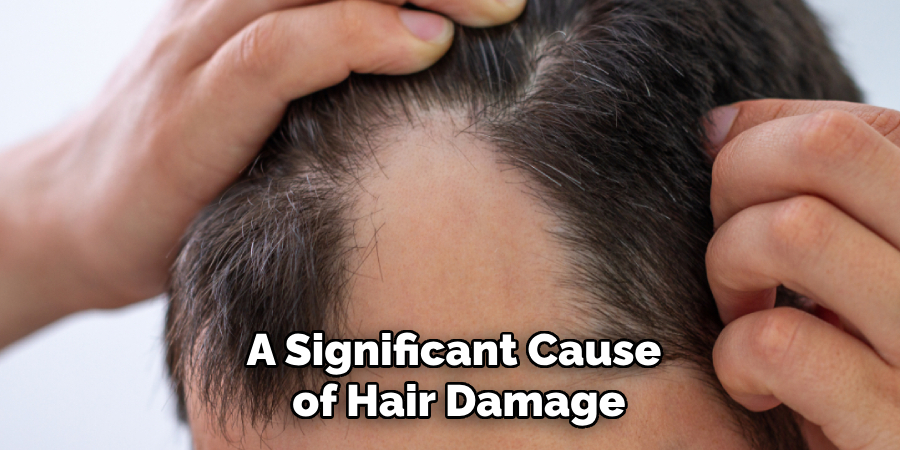
Excessive use of heat-styling tools, such as blow dryers, flat irons, and curling irons, is a significant cause of hair damage. Allow your hair to air-dry naturally whenever possible or use a blow dryer on the most incredible setting to prevent heat-related breakage. If you must use heat styling tools, always apply a heat protectant spray beforehand to minimize damage. Reducing your dependency on heat will allow your hair to recover and regain its natural strength over time.
Step 7. Avoid Harsh Chemicals:
Chemical treatments like hair coloring, bleaching, perms, or relaxers can seriously damage hair. If you have damaged hair, it’s best to pause these treatments while focusing on recovery. If you must color or treat your hair, consult a professional stylist to use gentler, less damaging methods and ensure proper aftercare to maintain its health.
Step 8. Eat a Balanced Diet:
Repairing damaged hair doesn’t depend solely on the products you apply; what you eat plays an essential role, too. A balanced diet rich in vitamins, minerals, and proteins provides the building blocks your hair needs to grow stronger and healthier. Incorporate foods like eggs, nuts, fish, spinach, and sweet potatoes into your diet. Vitamin E, biotin, and omega-3 fatty acids are particularly beneficial for restoring the health and vitality of damaged hair.
Step 9. Stay Hydrated and Protect Your Hair:
Staying hydrated by drinking plenty of water ensures your hair remains moisturized. Additionally, protect your hair from external damage by wearing a hat or using hair products with UV protection when spending extended time outdoors. Avoid prolonged exposure to harsh weather conditions like strong winds, extreme sun, or cold temperatures, which can dry out or weaken your hair.
Step 10. Be Patient and Consistent:
Healing damaged hair requires time and dedication. Consistency is critical—stick to your new hair care routine and allow your locks the time they need to recover. Don’t get discouraged if you don’t see immediate results; with consistent effort, you will gradually notice improvements in your hair’s texture, appearance, and overall health. Remember, patience is as essential as the care routine itself.
By following these steps and changing your hair care habits, you can repair and revitalize damaged hair. Over time, your locks will become healthier, stronger, and full of life, helping you feel more confident in your appearance.
5 Things You Should Avoid
- Overwashing: Washing your hair frequently can strip it of natural oils, leading to dryness and brittleness. Aim for balance and wash your hair every other day or as needed. Use a gentle shampoo and conditioner formulated for your hair type.
- Rough Towel Drying: Vigorously rubbing your hair with a towel to dry it can cause friction and breakage. Instead, gently squeeze out excess moisture and pat your hair dry with a soft towel or an old t-shirt.
- Ignoring Regular Trims: Neglecting regular hair trims can lead to the accumulation of split ends and breakage, hindering the hair’s ability to repair itself. Visit a trusted hairstylist regularly to keep your hair healthy and remove damaged ends.
- Skipping Hair Masks or Treatments: Adding a weekly hair mask or treatment to your routine can provide much-needed nourishment and repair for damaged hair. Look for products with ingredients like keratin, argan oil, and shea butter to strengthen and hydrate your locks.
- Don’t Band it Up: While a sleek bun or ponytail might seem like a quick and easy solution for damaged hair, constantly tying it up can cause strain and breakage. Allow your hair to breathe, and try different hairstyles that don’t put too much stress on your strands.
By avoiding these common mistakes, men can give their damaged hair a chance to repair itself and achieve healthier, more substantial locks.
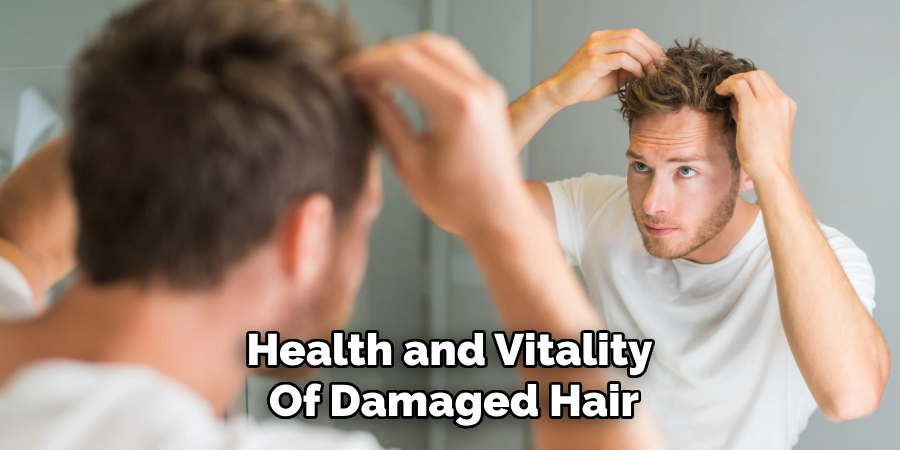
Conclusion
Healthy hair is an essential part of self-care and grooming for men.
By following a few essential tips on how to repair damaged hair men, such as using gentle products, avoiding harsh treatments, and giving your hair regular care and attention, you can maintain strong and healthy locks. Remember to listen to your hair’s needs and adjust your routine accordingly. When in doubt, consult with a trusted hairstylist for personalized advice on how to best care for your specific hair type. With the right approach, you can achieve luscious and healthy hair that will make you feel confident and put together daily.
So start incorporating these tips into your hair care routine today, and enjoy the benefits of healthy and nourished locks!
About the Author
Jane Hubbard is a passionate beauty expert with a wealth of experience in makeup, hair, and overall beauty techniques. After years of working as a hairdresser specialist, she followed her entrepreneurial spirit and started her own consultancy business.
Jane has always been driven by her desire to help others feel confident in their own skin, and she does this by sharing her knowledge, experiences, and practical beauty tips. Through her consultancy, she empowers individuals to embrace their unique beauty, offering tailored guidance that boosts both self-esteem and personal style.
Professional Focus
- Specializes in makeup, hairstyling, and beauty consulting.
- Provides personalized beauty advice, tips, and techniques to help individuals feel confident in their appearance.
- Dedicated to staying up-to-date with the latest industry trends and developments.
- Passionate about creating a comfortable and empowering experience for every client.
Education History
- University of Craft and Design – Bachelor of Fine Arts (BFA) in Woodworking and Furniture Design
- Woodworking Apprenticeships – Extensive hands-on training with skilled craftsmen to refine carpentry and furniture making techniques
- Online Courses & Masterclasses – Continued education in advanced woodworking techniques, design principles, and specialized tools
Expertise:
- Makeup artistry, hairstyling, and beauty consulting.
- Personalized beauty techniques to enhance confidence and self-expression.
- Educating clients on how to maintain their beauty routines at home.
